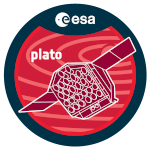According to dynamo theory, stars with convective envelopes efficiently generate surface magnetic fields, which manifest as magnetic activity in the form of starspots, faculae, flares, when their rotation period is shorter than their convective turnover time. Most red giants, having undergone significant spin down while expanding, have slow rotation and no spots. However, about 8% display spots, including a fraction that belong to close binary systems. From photometric time series and chromospheric emission measurements, Géhan et al. (2022, A&A 668) showed that red giants belonging to binary systems in a configuration of spin-orbit resonance display an enhanced magnetic activity compared to single stars with the same rotation rate. In other words, the large magnetic field of red giants in close binary systems is not only due to the faster rotation rate induced by tidal interactions, as it is generally admitted. Somehow, this work resuscitates an old speculation about a special binary-induced dynamo activity. We discuss how the PLATO mission will help understanding differences between dynamo mechanisms of single versus close binary stars.

 PDF version
PDF version
